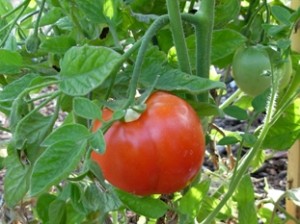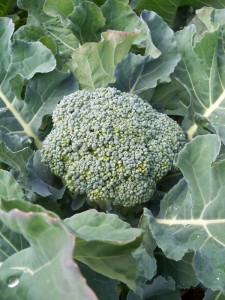Take the Year Round Gardening Challenge!
go.ncsu.edu/readext?268646
en Español / em Português
El inglés es el idioma de control de esta página. En la medida en que haya algún conflicto entre la traducción al inglés y la traducción, el inglés prevalece.
Al hacer clic en el enlace de traducción se activa un servicio de traducción gratuito para convertir la página al español. Al igual que con cualquier traducción por Internet, la conversión no es sensible al contexto y puede que no traduzca el texto en su significado original. NC State Extension no garantiza la exactitud del texto traducido. Por favor, tenga en cuenta que algunas aplicaciones y/o servicios pueden no funcionar como se espera cuando se traducen.
Português
Inglês é o idioma de controle desta página. Na medida que haja algum conflito entre o texto original em Inglês e a tradução, o Inglês prevalece.
Ao clicar no link de tradução, um serviço gratuito de tradução será ativado para converter a página para o Português. Como em qualquer tradução pela internet, a conversão não é sensivel ao contexto e pode não ocorrer a tradução para o significado orginal. O serviço de Extensão da Carolina do Norte (NC State Extension) não garante a exatidão do texto traduzido. Por favor, observe que algumas funções ou serviços podem não funcionar como esperado após a tradução.
English
English is the controlling language of this page. To the extent there is any conflict between the English text and the translation, English controls.
Clicking on the translation link activates a free translation service to convert the page to Spanish. As with any Internet translation, the conversion is not context-sensitive and may not translate the text to its original meaning. NC State Extension does not guarantee the accuracy of the translated text. Please note that some applications and/or services may not function as expected when translated.
Collapse ▲North Carolina Cooperative Extension has a challenge for you:
Grow at least one type of vegetable in each season of the year.
It’s not as hard as it sounds. Vegetables can be grown outside in southeastern NC from late winter through late fall. And, if you are willing to invest in a low cost cold frame or frost protection cloth, harvesting through the winter is easily possible.
Planting for Spring: January – March
January is a great month for ordering seeds and getting organized for the year to come. Believe it or not, February is the month to start planting hardy crops outside. Potatoes and garden peas, along with their close relatives snow peas and sugar snaps, should be planted in the ground between early February and early March. Carrots, parsnip, lettuce, spinach, mustard, rutabaga, radish, and turnip seed can be sown in the garden from mid February to early April.
Transplants of onions, broccoli, cabbage, kale, and collards can be set out from late February through mid March. If you want to start your own transplants of these crops sow them in an unheated cold frame in January and February. March is the time to start seeds of eggplants, peppers, and tomatoes indoors to have transplants ready for spring.
Planting for Summer: April – July

Plant tomatoes, peppers, eggplant, cucumbers, squash, melons, beans, and other warm season crops to harvest in summer and fall.
It is safe to plant warm season crops like cucumbers, tomatoes, southern peas, and lima beans outside after the last average frost date; April 15 for inland areas, March 30 along the immediate coast. A few warm season crops will tolerate near freezing temperatures and can be started a little earlier. These include green beans, sweet corn, squash and zucchini. These crops can be sown in the garden as early as late March; just be prepared to protect them if a late frost is predicted. Other warm season crops are frost sensitive and should not be planted outside until all threat of frost is past. These include melons and okra, which can be set out as transplants or sown direct; peppers, eggplants, and sweet potatoes, which are set out as transplants; and peanuts, which are seeded directly into the garden in late April.
Planting for Fall and Winter: August – October
By August, cucumbers and squash have usually succumbed to pests, corn is finished, and disease problems have taken out most tomatoes, though melons are just coming into harvest. Don’t be discouraged, start fresh! Late summer is the time to start crops for the fall garden. Sow seeds of green beans, carrots, beets, swiss chard, kohlrabi, leeks, rutabaga, parsnip, turnips, squash, zucchini, and cucumbers in the garden from mid August to mid September. Tomato transplants for a fall crop can also be planted. Sow broccoli, cauliflower, kale, collard, cabbage, lettuce, and spinach seeds in mid August and transplant into the garden in September, or purchase transplants from a garden center. Spinach and lettuce can also be sown direct in the garden in September.
October is the time to plant garlic from cloves and onion from seeds direct in the garden. Both crops will grow through winter and be ready to harvest in late spring. Late summer planted cucumbers, squash, and tomatoes, as well as any peppers and eggplant that are still hanging on, will continue to product until frost, which usually occurs in early November. Expect hardy crops like collards, kale, and cabbage to produce through December or later. The growing season for less hardy cool season crops like broccoli, lettuce, spinach, and cauliflower can be extended by covering these crops with cold frames or growing them in an unheated tunnel house.
Learn More
Learn more about vegetable gardening from these Extension resources:
- North Carolina Cooperative Extension Vegetable Production Publications and Fact Sheets:
- Clemson University Extension Vegetable Fact Sheets:
- Planting Guide
Contact your local Cooperative Extension office to speak to a Horticulture Agent or an Extension Master Gardener Volunteer to get expert advice.
- If you live in Pender County, call 910-259-1235
- In New Hanover County, call 910-798-7660
- In Brunswick County, call 910-253-2610
- In Onslow County, call 910-455-5873
- In Duplin County, call 910-296-2143
Visit your local Cooperative Extension office to learn more about gardening. Go to https://www.ces.ncsu.edu/local-county-center/ to find your county Extension center.




